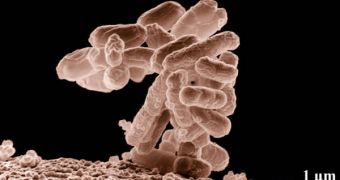Bioengineering is one of the most promising fields of science today, because it has the ability to transform all organisms into better, more efficient versions of themselves. Genomes are read via high-throughput sequencing at a speed of a few million DNA letters or bases per hour, but, when it comes to tinkering with the sequences, the job suddenly becomes very difficult. Old manipulation techniques have not received upgrades for years, so teams around the world spend countless hours modifying just a subsection of a single gene, before finally moving on to the next one. Now, a new system has the power to change all that, its creators reveal.
The Multiplex Automated Genome Engineering (MAGE) programming method, devised at the Harvard Medical School by Professor of Genetics George Church, is touted as having the ability to overcome these obstacles, and to offer a major boost to the sector of synthetic biology. In a proof-of-concept trial, the team behind MAGE managed to use the system in a manner that allowed for the modification of E. coli bacterial colonies in just three days. Colonies are used all the time, to synthesize antibiotics and other drugs, but it usually takes months to years before the correct type is grown from basic bacteria.
The new method does it at light speed, compared with others. “We initiated the project to close the gap between DNA sequencing technology and cell programming technology,” the Co-First Author of the new paper, graduate student Harris Wang, says. Details of MAGE appear in the June 26th issue of the prestigious scientific journal Nature.
“The goal was to use information gleaned from genetics and genomics to rapidly engineer new functions and improve existing functions in cells. We wanted to develop a new tool and demonstrate how to apply it; we were determined to hand labs a hammer and a nail,” the other Co-First Author, HSM postdoctoral researcher Farren Isaacs, adds. In their experiments using E. coli, the scientists inserted a few genes into its solitary circular chromosome, making the cultures produce the powerful antioxidant lycopene, which can regularly be found in tomatoes and other vegetables.
The next step was to force the cultures to produce even more of the substance. “Genes function in teams, not in isolation. Cloning often encourages us to ignore the interdependence of genes and oversimplify the cellular system. We might forget, for example, that one mutation can strengthen or weaken the effects of another mutation,” Wang explains. Isaacs adds that, “It's nearly impossible to predict which combinations of mutations will confer the desired behavior. Biology is so complex that we don't know the optimal solution.”
“We accelerated evolution, generating as many as 15 billion genetic variants in three days and increasing the yield of lycopene by 500 percent. Can you imagine how long it would take to generate 15 billion genetic variants with traditional cloning techniques? It would take years,” Wang shares. “We decided to engineer in the context of biology, embracing evolution rather than trying to fit a square peg in a round hole. This automated, multiplex technology will allow labs to engineer entire pathways and genomes and take cell programming to a whole new level,” Church concludes.

 14 DAY TRIAL //
14 DAY TRIAL //